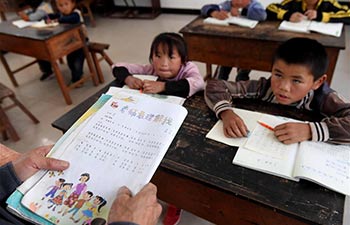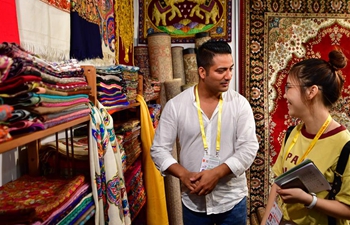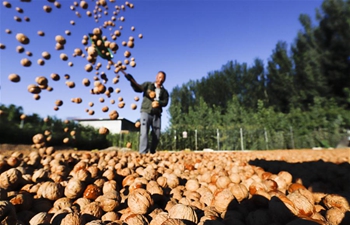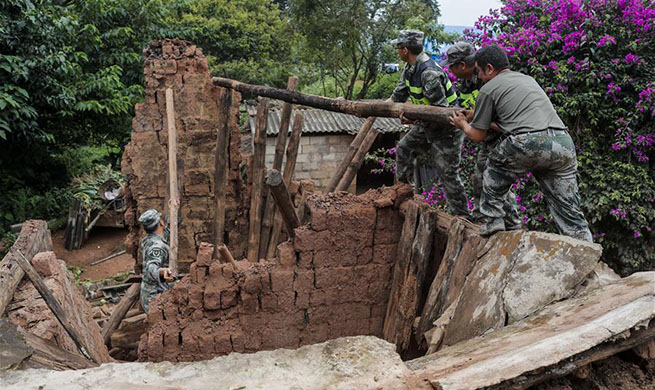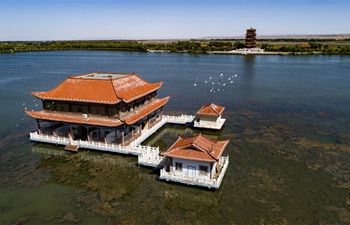NANCHANG, Sept. 9 (Xinhua) -- The circular or square Hakka enclosure houses in east China's Jiangxi Province have a history of over 400 years. However, today, only Li Minghua, 56, masters the knowledge and skills to build and fix the traditional houses.
Nestled in mountains, the Hakka round houses, a variation on which is more widely known in adjacent Fujian Province as tulou, date back to the late Ming Dynasty (1368-1644) when a group of people from north China migrated to the south and settled down. Called the Hakka, literally meaning "guest families", they adapted to the local environment and developed their own language, customs, and the unique architecture.
According to Li, people live in small rooms in the enclosures, which have the function of the defense fortress. The walls are made with lime, clay, and sand mixed with brown sugar, egg white, and sticky rice. After fermenting for 15 days, the materials are mixed with cobblestones and tung oil before they are rammed into thick, solid walls of the enclosures as a kind of protection against invaders while providing accomodation.
"For generations, apprentices started young to learn the building techniques, which are much more complicated than today's home building," said Li, who learned carpentry and craftsmanship at age of 14.
Built on a base of stone, the thick walls of these unique buildings are fortified with cobblestones and wood, and their layout incorporates the tradition of feng shui.
According to a latest survey on cultural relics, Jiangxi has over 500 such historical Hakka round houses -- 376 of them in Longnan County. Some architects have called them "Oriental Roman Castles."
The architectural style was added to the tentative list of China's world heritage by National Cultural Heritage Administration in 2012, according to Zhang Xianzhong, director of Cultural Heritage Bureau of Longnan County.
Zhang said many houses have decayed facades and some are even facing the threat of destruction. And most of the original inhabitants have moved out. The county government is setting aside funds to repair them.
But despite the efforts to preserve the round houses, the biggest challenge is a shortage of skilled craftsmen.
As the province's only recognized cultural heritage inheritor of the Hakka architecture, Li has worked on round houses all over the province, repairing them in their original style.
Li is currently undertaking maintenance on a Yanyuanwei round house built in Qing Dynasty (1644-1911), which covers an area of more than 2,000 square meters.
"It takes three months to complete the maintenance. My team works from 7:00 a.m. to 5:30 p.m. every day," he said.
"The youngest in our construction team is already 41 years old. Craftsmen able to maintain this architecture are in short supply," said Li.
He said he used to have six apprentices, but all of them have left, some moving to cities to develop their own home decoration businesses.
"Traditional craftsmanship does not make money. Not even my own son is willing to take on my business to fix the traditional houses," said Li.
Modern lifestyles have made the traditional architecture lose its appeal to younger generation.
Li said rooms in the round houses are small and dark. Nowadays, people want to live in spacious and bright houses.
However, the round houses are important to the Hakka as a means of narrating and witnessing the Hakka history and culture, Li said. He has called on young people to safeguard their historical roots and the spiritual home of Hakka people.
"I grew up living in round houses. They are just like a mother to me," Li said. "The Hakka pay attention to filial piety. I take it as my life-long mission to protect, repair and restore these houses."





